

My name is Lee Hammond. I have been a licensed ham since 1995 but have been interested in and loved the hobby as long as I can remember. As a child I listened to my father K7GPA (formerly KL7CWJ) tune through the bands on an old Heathkit rig he built while we lived in Alaska - 1958 vintage. I was fascinated by the voices coming in from all over the world and I was hooked.
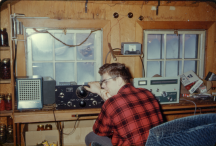 My father (K7GPA) and his attic ham shack
My father (K7GPA) and his attic ham shack
It was an ideal setup for ham radio. We lived alone on the tundra three miles from a small village named Unalakleet. My father was an electronics technician for the FAA with responsibility for keeping the airline navigation equipment on the air. His shack was in the attic of our home. The high sloping roof of the house provided virtually a second floor. The laundry facilities were in the attic also, including the clothes line. The clothes line had three wires strung between supports. One night, just for fun, my dad decided that the clothes line may radiate enough RF for someone to hear and hooked it up to his rig. To his surprise it worked quite well! When asked on the air what kind of antenna he was using he replied, "a diaper dipole". My dad smiles as he remembers the responses and questions he received back. That was my introduction to Ham Radio.
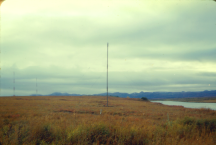 All the room in the world for a ham antenna!
All the room in the world for a ham antenna!
I spent much of my first five years as a licensed ham working VHF and UHF. There is a strong 2-meter community here along the Wasatch Front of Utah (between Ogden and Provo). Several repeaters sit on mountain peaks above 9,000 feet and provide excellent coverage. In the fall of 2000 I decided that I needed to get back to the roots of ham radio - the HF bands. I purchased a Kenwood TS570SG and put up a multiband vertical antenna (not enough room in the subdivision for anything horizontal) and once again thrilled at voices and CW coming in from all over the world.
My first HF antenna was an MFJ1798 10-band. It proved to be an excellent solution for our limited area. I worked just about everyone I could hear and logged six continents. In the fall of 2001 we moved to another subdivision. I was assured by the developer that the CC&R's would not be a problem. That assurance evaporated as soon as we signed the papers. Not only could I not put up my MFJ antenna, I could not have any ham radio antenna that was visible to any other neighbor.
My heart is still in HF so abandoning the lower bands was not an option. After doing a little surfing on the net, I came across a vertical antenna from Hustler (6BTV) that looked like it might fit inside a PVC pipe. In fact another ham reported his successful installation of exactly what I was contemplating. A nice white PVC pipe with a flag on top would be a flag pole, not an antenna. Since the actual antenna was inside the pipe, it could not be seen by anyone. So the CC&R requirement could be complied with -- going strictly by the letter of the law.
In January of 2003 I purchased the 6BTV, buried 64 radials under the grass, installed and tuned up the antenna (or flag pole) and have, once again, enjoyed the thrill of DX. My flag pole antenna has worked marvelously and so far the neighbors just think we are very patriotic.
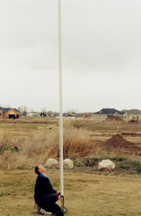
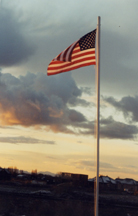
The shack consists of:
73 to all!
Lee Hammond, KD7I
Syracuse, Utah
QSL Card Samples:
Utah has some beautiful scenery!
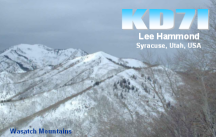
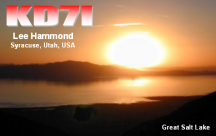
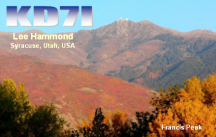
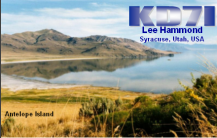
Thanks to all at QSL.NET for making this service possible.